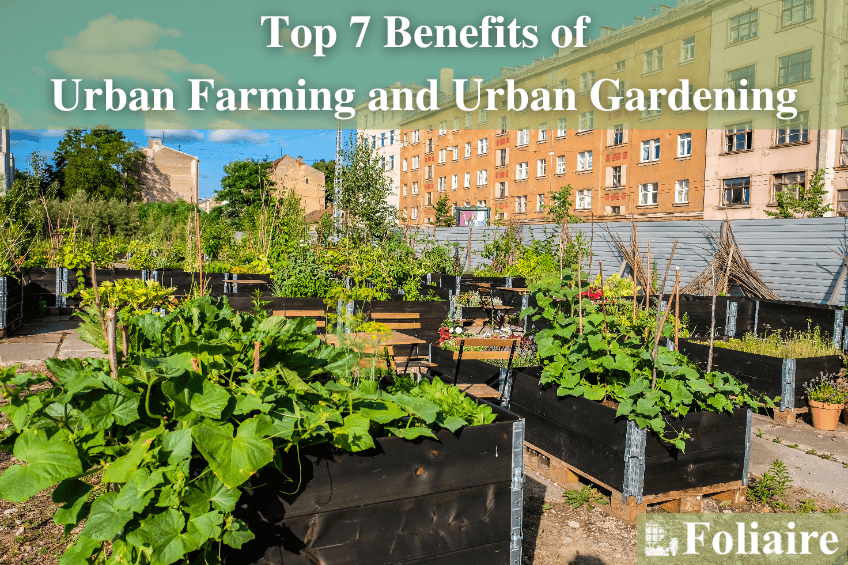City Blooming - The Facts
City Blooming - The Facts
Blog Article
Little Known Questions About City Blooming.
Table of ContentsCity Blooming - An OverviewCity Blooming Fundamentals ExplainedSome Known Facts About City Blooming.Some Known Questions About City Blooming.The Basic Principles Of City Blooming
Interested in growing food for sale in the City of Chicago? Below is a list of often asked questions relating to the regulations and policies that cultivators should take into consideration when planning a city farming task.
The zoning change does not modify any various other codes managing composting, structure licenses, buying or leasing City had building, company licenses or ecological contamination. There are existing codes that regulate these problems and they stay completely impact and might apply to your task. Community yards are usually owned or taken care of by public entities, civic organizations or community-based organizations and kept by volunteers.
Urban farms grow food that is intended to be offered, either on a not-for-profit or for-profit basis. As a result of their commercial function, city farms need a business license. Yes. A community garden is allowed to market surplus generate that was grown on website if the sales are accessory or subservient to the garden's primary function explained over.
9 Simple Techniques For City Blooming
Composting is enabled but only for plant material that is produced and utilized on site. The amount of compost material can not surpass 25 cubic lawns at any type of provided time according to the standards in 7-28-715 of the City's Municipal Code. Yes. Because the soil at most brand-new garden sites requires amending, garden compost, soil, timber chips, or various other materials can be gotten to create or improve the growing space - landscaping.

If a building permit is needed after that the hoophouse will certainly be thought about an accessory building. You can learn more regarding the building permit requirements by calling the Department of Structures. The 25,000-square-foot size limit is planned to stop a single area garden from dominating an offered block or interfering with the block's existing residential or commercial personality.
The restriction does not relate to yards situated in Public Open Area (POS) districts. Can there be greater than one neighborhood garden that is 25,000 square feet on a single block? Yes. The size limit applies to specific yards, not to individual blocks. No. Fencing is not required, nevertheless, gardens that have big auto parking locations may be called for to mount fence or various other landscaping attributes.
Some Known Incorrect Statements About City Blooming
B1 & B2 districts require that all business use tasks be conducted inside. Is secure fencing required for metropolitan farms? Fencings may be needed, along with landscaping and screening, for certain car park areas and outdoor work or storage space locations depending on place and the specific activity taking place.
Urban ranches need building licenses and zoning authorizations prior to construction (garden care). Various other types of city review may be needed depending on particular frameworks, tasks, dimension, landscape design, licensing, public heath and stormwater monitoring concerns.
The Department of Service Affairs and Consumer Security can aid figure out the specific type of organization permit that's called for. Off street vehicle parking is required for the majority of industrial projects in Chicago. The called for number of auto parking areas is based on the number of staff members working on site and not the square video footage of the expanding area.
City Blooming for Beginners

Yes. An urban farm can sell compost material created on website, however, the operation needs to follow the policies in 7-28-715 of the Chicago Municipal Code. Yes. Aquaponic systems are enabled inside your home on city ranches in numerous zoning districts. A zoning review and structure permit is required in order to install structures or systems and an organization certificate is called for as defined over.
Approximately 5 hives or colonies of honey might be maintained as an accessory usage. Nonetheless, beekeepers should sign up with the Illinois Division of Agriculture. For additional information about the proposed zoning amendment you might contact the Department of Real Estate and Economic Growth, Bureau of Planning and Zoning at 312.744.8563.
Farming in cities and city areas A city ranch in Chicago. Urban farming refers to numerous practices of cultivating. https://www.provenexpert.com/city-blooming/, processing, and distributing food in urban areas. The term also relates to the area activities of pet husbandry, aquaculture, beekeeping, and cultivation in a metropolitan context. Urban agriculture is distinguished from peri-urban farming, which happens in country areas at the side of residential areas.
Not known Details About City Blooming
, who look for to create social networks established on a common principles of nature and area holism. These networks can create by method of official institutional assistance, ending up being integrated into regional town planning as a "shift community" activity for lasting city growth.
The extra straight access to fresh veggie, fruit, and meat products that might be know through city agriculture can boost food protection and food safety like it and security while lowering food miles, leading to lower greenhouse gas discharges, consequently adding to climate modification reduction. Several of the initial proof of urban agriculture originates from Mesopotamia.
Report this page